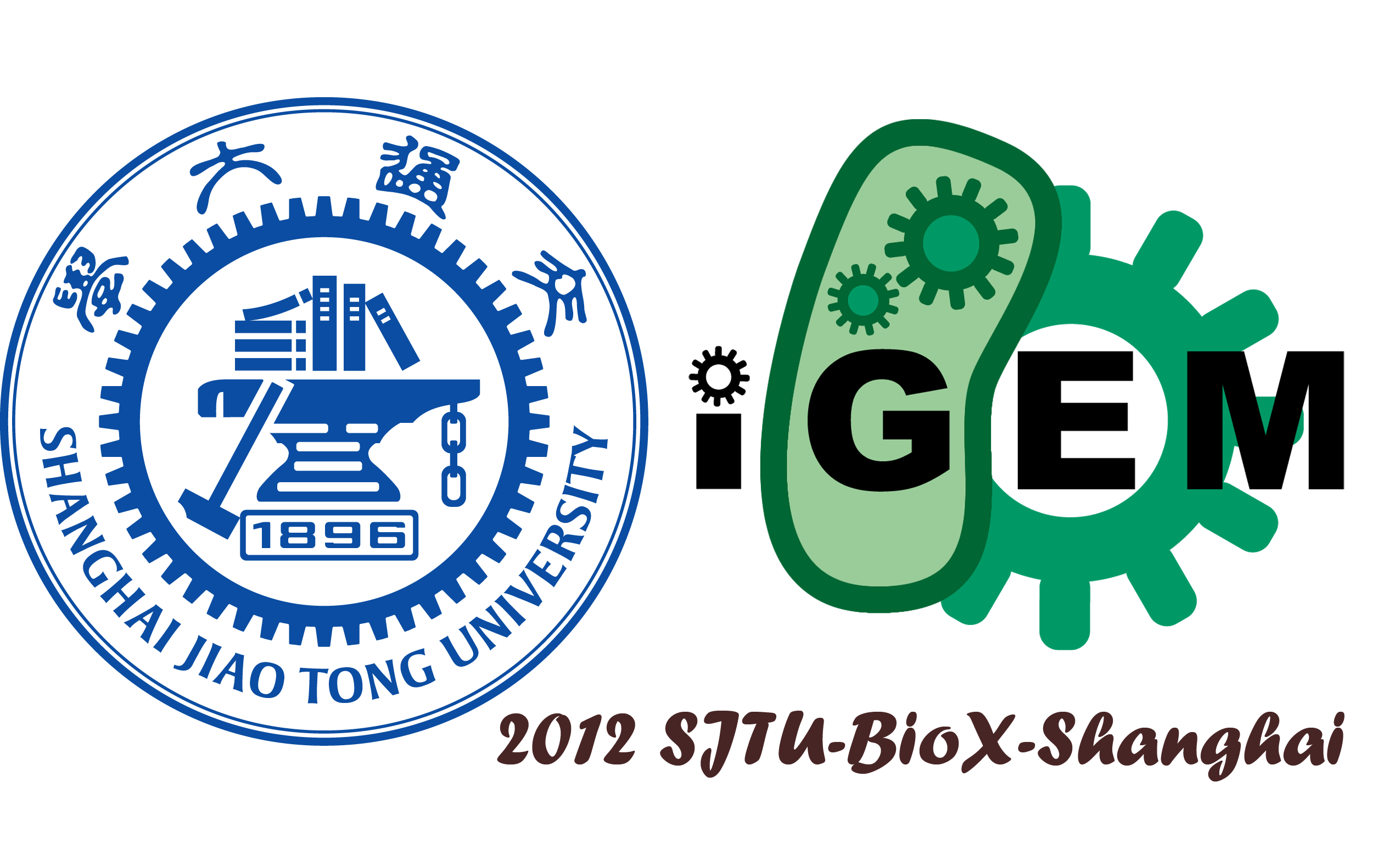Team:SJTU-BioX-Shanghai
From 2012.igem.org
(→Background of Our Team) |
(→Background of Our Team) |
||
| Line 23: | Line 23: | ||
{|align="justify" | {|align="justify" | ||
| | | | ||
| - | == | + | ==About of Our Team == |
| - | + | ||
Our team consists of 11 members, who are all junior students of Shanghai Jiao Tong University. | Our team consists of 11 members, who are all junior students of Shanghai Jiao Tong University. | ||
Most of us came from School of Life Sciences and Biotechnology. | Most of us came from School of Life Sciences and Biotechnology. | ||
| Line 31: | Line 30: | ||
We were discussing our project and performing most of experiments in Bio-X institute of SJTU. | We were discussing our project and performing most of experiments in Bio-X institute of SJTU. | ||
| - | [[Image:SJTU-BioX-Shanghai_logo.png | + | ===Team Members=== |
| + | |||
| + | [[Image:SJTU-BioX-Shanghai_logo.png|right|250px]] | ||
== Description of Our Project == | == Description of Our Project == | ||
Revision as of 01:34, 10 July 2012
-->
About of Our TeamOur team consists of 11 members, who are all junior students of Shanghai Jiao Tong University. Most of us came from School of Life Sciences and Biotechnology. We are working, living and studying like a whole family. We were discussing our project and performing most of experiments in Bio-X institute of SJTU. Team MembersDescription of Our ProjectMembrane Workshop Our slogan: Cluster makes it faster; interaction alters the direction Motivation: 1. There lacks compartment in prokaryotic cells, and thus engineered enzymes diffuse in the cytoplasm, which makes certain reactions proceed at a very low speed. 2. Divergent biochemical pathways commonly exist in all types of organisms, but it is extremely hard to artificially control and switch the directions of these reactions.
1. To accelerate reactions in certain biochemical pathway 2. To switch the biochemical pathway from one to the other through extracellular signal control
As there is no compartment in prokaryotic cells, enzymes involved in a biochemical pathway diffuse all over the cytoplasm. Intermediates generated from one enzyme cannot be passed efficiently to the next due to spatial obstacles. However, if we attach those enzymes to engineered membrane proteins which assemble together, the reactions are going to proceed much faster. Why do we attach enzymes to interacting protein domains and ligands that assemble together? – Interacting proteins fused with enzymes can decrease the distance which intermediates must travel between enzymes, improving reaction speed. Why do we localize the enzymes to the membrane? – Interaction of proteins can only be effective within a small distance. Membrane localization of the enzymes can integrate those engineered proteins to 2-dimensional scale, which would absolutely increase the possibility that potential interacting domains and ligands dimerize. 2. Membrane Switch Now we have built a device that can speed up a biological pathway. Our next goal is to control the pathway better---- to switch the direction of certain reactions, as shown in figure 3. Divergent biochemical pathways commonly exist in all types of organisms, and most of those reactions are stringently and internally controlled. However, it is extremely hard to artificially control and switch the directions of these reactions. Usually there are two different products produced in divergent reactions. Sometimes we want one product, and sometimes we want the other. Using our designed device, we can change the direction by introducing different extracellular signals.
| File:SJTU-BioX-Shanghai team.png Your team picture |
| Team SJTU-BioX-Shanghai |
| Home | Team | Official Team Profile | Project | Parts Submitted to the Registry | Modeling | Notebook | Safety | Attributions |
|---|
 "
"
